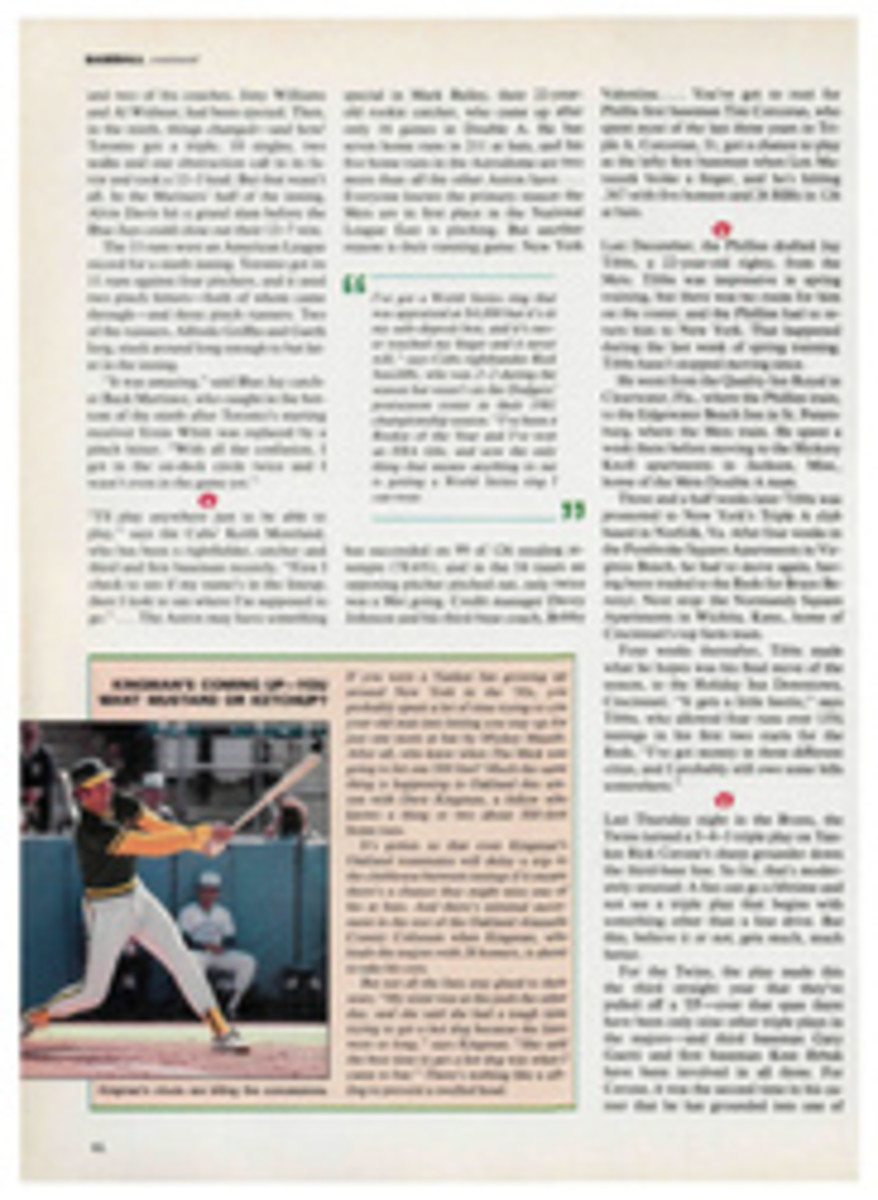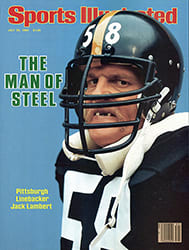
A GYMNASTICS CRITIC SAYS THE LATER YOU PERFORM, THE BETTER YOU SCORE
After judging the pommel-horse event at the 1971 Nebraska state high school gymnastics meet, John Scheer was approached by a coach.
"Have you seen those scores on floor exercise?" the man inquired. "They've just gone up, up, up, up!"
"You're seeing things," scoffed Scheer, who was director of officials for the competition.
A few minutes later, a second coach approached Scheer with a similar observation. One by one, several other coaches did the same thing.
Scheer became curious. After the meet, he ran a statistical analysis of the scores and discovered, much to his surprise, that in all seven events, marks went up as the competition progressed. According to Scheer, the increase was considered statistically significant in three of the events.
That finding was enough to launch Scheer, 39, who holds a Ph.D. in secondary education and is an assistant professor at the University of Nebraska-Lincoln, on a prolonged investigation. With the assistance of Charles Ansorge, a colleague in the school of health, physical education and recreation at the university, Scheer has made statistical analyses that have confirmed the validity of some complaints about judging bias in gymnastics competitions.
Scheer's work offers compelling evidence not only that scores inflate as a meet progresses, but also that judges are influenced by the order of appearance of the individuals on a team. Accustomed by tradition to seeing a team's worst gymnasts compete first and the best last, judges have a tendency to prejudge, according to Scheer. "If a gymnast competed in the first third of the order," Scheer says, "he was at a significant disadvantage."
In one of his earliest studies, published in 1975, Scheer devised a means of detecting judging bias. In 1973 he videotaped the Big Eight gymnastics meet and from it produced two sets of tapes, one showing competitors in the sequence they performed in, the other altered so that the first and fourth gymnasts for selected teams were flip-flopped. Twelve nationally certified judges were asked by Scheer to score the routines on one tape, then score the routines on the other 48 hours later.
The results clearly indicated a tendency for judges' scores to be influenced by the order of an athlete's performance. When a gymnast appeared fourth on his team, he received significantly higher marks than when he appeared first. In some circles this came to be known as the Scheer Effect.
Scheer's studies have been published in respected journals (The Research Quarterly for Exercise and Sport and The Journal of Sport Psychology), and his credibility is enhanced by his background in the sport. He was a gymnast for Nebraska-Lincoln in the 1960s and coached high school teams for a couple of years. Scheer became a nationally certified judge in 1970, and he has been internationally certified for eight years. He has judged more than a dozen international meets, including the 1979 World University Games and the 1980 World Cup. In 1980 and again this year, Scheer was a judge at the U.S. Olympic trials.
In 1977, Scheer and Ansorge again went to the videotape, this time at a women's regional collegiate meet, to measure judging bias linked to order of appearance. As expected, the results supported their previous findings, but this time the researchers administered a test to explore the psychological makeup of the judges. They discovered that so-called "internals," individuals who believe they control their own destinies, were less susceptible to bias than were "externals," who believe that their lives are largely controlled by factors such as fate and chance.
Scheer hopes that established judges will be exposed to his research so that they might become aware of their vulnerabilities and thus be prepared to cope with them. But he adds, "To be quite honest, I think the studies we've done haven't really had all that much of an impact on the gymnastics community."
Nevertheless, the bias bloodhound remains undaunted. Scheer has picked up a new scent to pursue. This summer he's at home in Lincoln, sifting through mounds of statistical data on the judging of figure skating.

